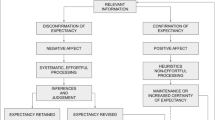Abstract
In order to inform the design of behaviors for robots that share domestic and public spaces with people, it is important to know what robot behavior is considered as normative. The work reported in this paper stems from the premise that what is perceived as socially normative behavior for people may differ from what is considered socially normative for a robot. This paper details the development of a data collection instrument, BEHAVE-II, for assessing user responses toward a robot’s behavior using both attitudinal and behavioral responses. To test the validity and reliability of the BEHAVE-II instrument, a human-robot interaction experiment was conducted in which a robot or a human invaded the personal space of a participant. We found that participants’ reactions were stronger when their personal space was invaded by a robot compared with a person. This points to the fact that humans are actually highly sensible whether robots’ adhere to social norms which underlines the importance of the BEHAVE-II instrument.




Similar content being viewed by others
Notes
A simplified version of the scheme is reported in [14].
Artificial Intelligence, Arts & Design, Chemical Engineering, Communication, Earth Sciences, Economics & Management, Electrical Engineering, Humanities & Social Sciences, Information Science & Technology, Law or Mechanical Engineering.
References
Argyle M, Dean J (1965) Eye-contact, distance and affiliation. Sociometry 289–304
Argyle M, Ingham R, Alkema F, McCallin M (2011) The different functions of gaze. Semiotica 7(1):19–32. doi:10.1515/semi.1973.7.1.19
Black M, Yacoob Y (1995) Tracking and recognizing rigid and non-rigid facial motions using local parametric models of image motion. In: Proceedings of 5th international conference on computer vision, 1995. IEEE, New York, pp 374–381
Butler J, Agah A (2001) Psychological effects of behavior patterns of a mobile personal robot. Auton Robots 10(2):185–202
Cramer H, Evers V, Ramlal S, van Someren M, Rutledge L, Stash N, Aroyo L, Wielinga B (2008) The effects of transparency on trust in and acceptance of a content-based art recommender. User Model User-Adapt Interact 18(5):455–496
Dautenhahn K (2003) Roles and functions of robots in human society: implications from research in autism therapy. Robotica 21(4):443–452
Ekman P, Friesen WV, Hager JC (2002) Facial action coding system. A human face
Guerrero L (2005) Observer ratings of nonverbal involvement and immediacy. In: The sourcebook of nonverbal measures: going beyond words, pp 221–235
Guerrero LK, Jones SM, Burgoon JK (2000) Responses to nonverbal intimacy change in romantic dyads: effects of behavioral valence and degree of behavioral change on nonverbal and verbal reactions. Commun Monogr 67(4):325–346
Hall E (1969) The hidden dimension. Anchor Books, New York
Hayduk L (1983) Personal space: where we now stand. Psychol Bull 94(2):293
Heerink M, Krose B, Evers V, Wielinga B (2010) Assessing acceptance of assistive social agent technology by older adults: the Almere model. Int J Soc Robot 2(4):361–375
Ho C, MacDorman K (2010) Revisiting the uncanny valley theory: developing and validating an alternative to the godspeed indices. Comput Hum Behav 26(6):1508–1518
Joosse M, Sardar A, Evers V (2011) Behave: a set of measures to assess users’ attitudinal and non-verbal behavioral responses to a robot’s social behaviors. Soc Robot 84–94
Lee KM, Peng W, Jin SA, Yan C (2006) Can robots manifest personality? An empirical test of personality recognition, social responses, and social presence in human–robot interaction. J Commun 56(4):754–772
McCroskey J, McCain T (1974) The measurement of interpersonal attraction
McCroskey J et al (1973) Measurement of the credibility of peers and spouses
Mehrabian A (1968) Some referents and measures of nonverbal behavior. Behav Res Methods 1(6):203–207
Mumm J, Mutlu B (2011) Human-robot proxemics: physical and psychological distancing in human-robot interaction. In: 2011 6th ACM/IEEE international conference on human-robot interaction (HRI). IEEE, New York, pp 331–338
Nakauchi Y, Simmons R (2002) A social robot that stands in line. Auton Robots 12(3):313–324
Nomura T, Suzuki T, Kanda T, Kato K (2006) Measurement of negative attitudes toward robots. Interact Stud 7(3):437–454
Patterson M (1976) An arousal model of interpersonal intimacy. Psychol Rev 83(3):235
Reeves B, Nass C (1992) How people treat computers, television, and new media like real people and places. The media equation
Sardar A, Joosse M, Weiss A, Evers V (2012) Don’t stand so close to me: users’ attitudinal and behavioral responses to personal space invasion by robots. In: Proceedings of the seventh annual ACM/IEEE international conference on human-robot interaction. ACM, New York, pp 229–230
Syrdal D, Dautenhahn K, Walters M, Koay K (2008) Sharing spaces with robots in a home scenario—anthropomorphic attributions and their effect on proxemic expectations and evaluations in a live HRI trial. In: Proceedings of the AAAI Fall symposium
Takayama L, Pantofaru C (2009) Influences on proxemic behaviors in human-robot interaction. In: IEEE/RSJ international conference on intelligent robots and systems (IROS 2009). IEEE, New York, pp 5495–5502. 2009
Wang L, Rau P, Evers V, Robinson B, Hinds P (2009) Responsiveness to robots: effects of ingroup orientation & communication style on HRI in China. In: 4th ACM/IEEE international conference on human-robot interaction (HRI). IEEE, New York, pp 247–248
Wang L, Rau P, Evers V, Robinson B, Hinds P (2010) When in Rome: the role of culture & context in adherence to robot recommendations. In: Proceedings of the 5th ACM/IEEE international conference on human-robot interaction. IEEE Press, New York, pp 359–366
Author information
Authors and Affiliations
Corresponding author
Rights and permissions
About this article
Cite this article
Joosse, M., Sardar, A., Lohse, M. et al. BEHAVE-II: The Revised Set of Measures to Assess Users’ Attitudinal and Behavioral Responses to a Social Robot. Int J of Soc Robotics 5, 379–388 (2013). https://doi.org/10.1007/s12369-013-0191-1
Accepted:
Published:
Issue Date:
DOI: https://doi.org/10.1007/s12369-013-0191-1




